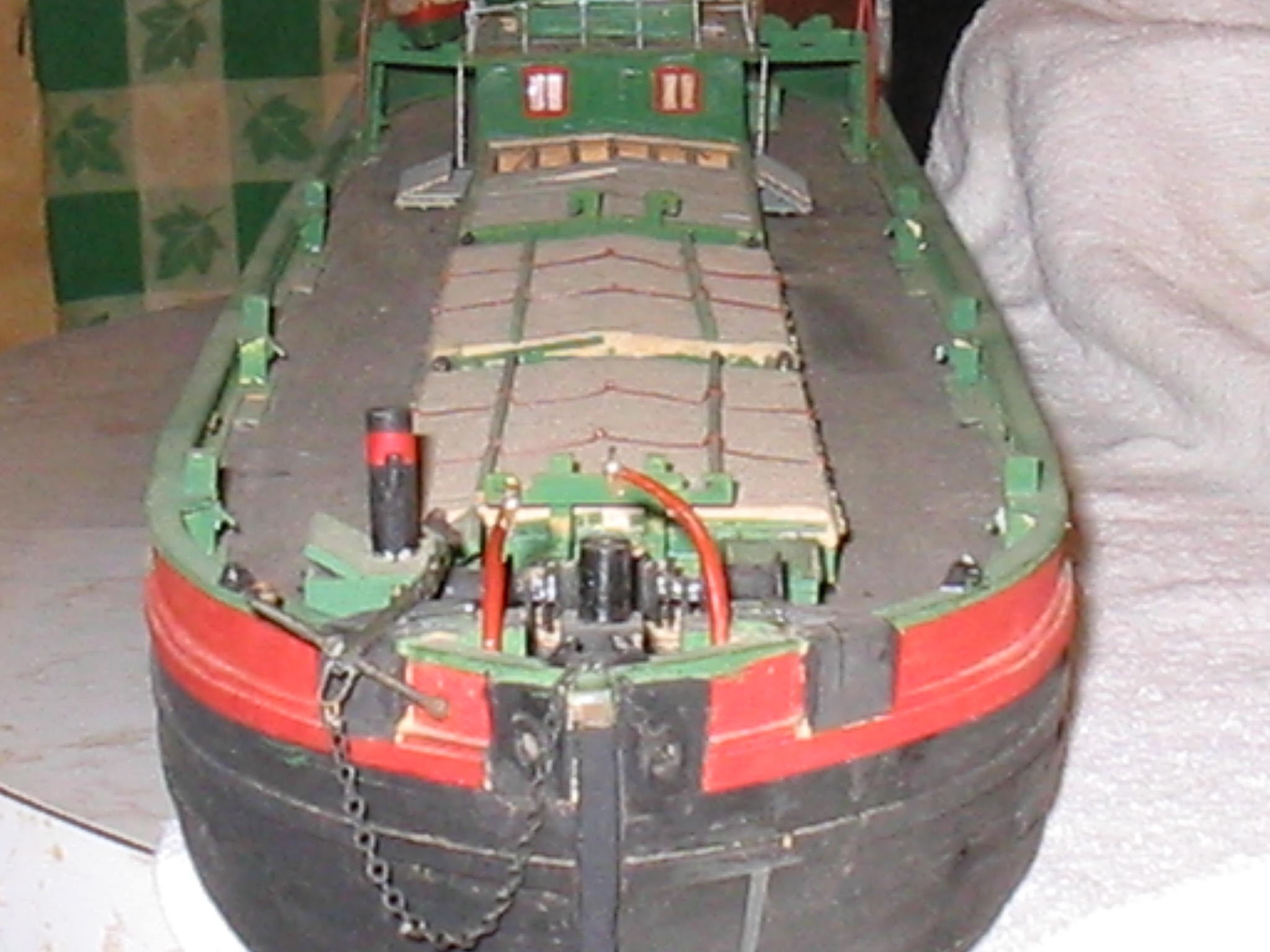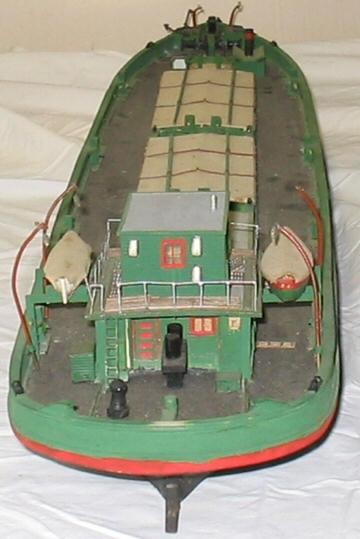Memories from a Reading Company Schooner Barge
By Roy Eliassen
Editor's Note: Most Reading fans know that the original purpose of the railroad's founding was to transport anthracite coal from the mines to the tidewater facilities at Port Richmond and Port Reading. But what happened to all those tons of black diamonds after they arrived at the water's edge? Roy Eliassen of Orlando, Florida is the son of a Reading Company schooner barge captain. His reminiscences provide a good deal of insight into an important aspect of the Reading's operations that is not generally given a good deal of attention.
 My Reading modeling interests do not fall into the usual railroad models. Most railroad modeler projects are trains, stations and layouts. My interest is in the seagoing operations of the Reading Company. From the end of the 19th century until the mid 1930s, the Reading Company had a large fleet of seagoing schooner barges and tug boats. I have been working on a waterline model of a Reading schooner barge for several years. I managed to get a line drawing of the prototype and used that to build the hull. The rest was from photos and my memory. My father had been a schooner barge captain for 25 years and I sailed with him in the summers.
My Reading modeling interests do not fall into the usual railroad models. Most railroad modeler projects are trains, stations and layouts. My interest is in the seagoing operations of the Reading Company. From the end of the 19th century until the mid 1930s, the Reading Company had a large fleet of seagoing schooner barges and tug boats. I have been working on a waterline model of a Reading schooner barge for several years. I managed to get a line drawing of the prototype and used that to build the hull. The rest was from photos and my memory. My father had been a schooner barge captain for 25 years and I sailed with him in the summers.
 A schooner barge was a vessel that was normally towed from port to port by a tug, but differed from other barges in that it carried some sails on masts that were considerably reduced in size from those found on a normal schooner. The sails were expected to expedite the progress of the tow when the wind was abaft the beam. Also, in cases when the barge broke free or had to be cast loose for one reason or another, these sails might aid the barge in reaching port. Due to the short rig on the barge, where nothing above the small lower courses, plus a fore staysail, were carried,only a small crew of three or four were needed.
A schooner barge was a vessel that was normally towed from port to port by a tug, but differed from other barges in that it carried some sails on masts that were considerably reduced in size from those found on a normal schooner. The sails were expected to expedite the progress of the tow when the wind was abaft the beam. Also, in cases when the barge broke free or had to be cast loose for one reason or another, these sails might aid the barge in reaching port. Due to the short rig on the barge, where nothing above the small lower courses, plus a fore staysail, were carried,only a small crew of three or four were needed.
At first the barges were cut down sailing ships, and were constructed around the turn of the last century. One I sailed on was built in 1904. The Reading Company at one time had 70 with 10 big coal fired tug boats. Now, there is only one left, and that is used as a breakwater at a yacht club on the Hudson River near Kingston, NY. I went there years ago and it was in relatively good condition considering it was nearly 40 years old. It has probably deteriorated some by now.
The firemen who shoveled coal into the boilers, unlike those shown in movies, were not bare chested, but wore long handles to protect them from the heat. Maybe they were tougher in the movies? I made one short trip on a tug and that was the only place I could not go. Life aboard the barge could be called primitive. There was no electrcity, lighting was kerosene fed. The cabin was aft, and the lower section contained the galley and the captain's quarters. Above was the crew quarters and wheel house. The steering wheel was forward of the crew quarters. I was allowed to go where the steering wheel was, but not back into crew quarters. When the barges in the tow were loaded, you had to steer since they were so deep in the water. If you got out of line you would drag the tow with you, and the tug captain would raise hell. When the barges were light they drew very little water and easily stayed in line. However, if you were light and got into a storm you could be in for a wild ride. Most of the barges that were lost were light.
My father did the cooking as did many barge captains. He saved money by not hring a cook. He had been a baker's apprentice and first went to sea as 2nd cook on a whaling ship. He first started on the barges as a cook. I have seen him literally thow stuff together, put it in the oven and end up with some wonderful tasting bread. The stove in the galley was coal fired and you did not have anything like temperature control. Below decks up forward was what was called the donkey room. It contained the boiler for producing steam to drive the windlass engine and the pump. The latter was used to pump out the bilges and to supply water from overboard for washing down the decks. Soundings were taken every day to check the water in the bilges. The windlass on deck was used to haul in the anchor chain and the hawser. Bathing was also done in the donkey room. It was done out of a bucket of water heated through the use of a steam pipe in the side of the boiler.
The tugboat captain had no such thing as radio communications or radar. He might have a personal radio to get weather reports. Forecasts were a far cry from today's forecasts. I can remember laying at anchor for three days in Vinyard Haven waiting for the weather to clear.
Did You Know?
Downloads
 A variety of Reading Company operations related documents, etc. that may be of use in your modeling efforts.
A variety of Reading Company operations related documents, etc. that may be of use in your modeling efforts.
 A variety of Reading Company operations paperwork, such as train orders, clearance forms, etc. that will help you operate your Reading layout in a prototypical manner.
A variety of Reading Company operations paperwork, such as train orders, clearance forms, etc. that will help you operate your Reading layout in a prototypical manner.
 Public Timetables, Employe Timetables, and Rulebooks that provide much useful operational information.
Public Timetables, Employe Timetables, and Rulebooks that provide much useful operational information.
 Signs, billboards, and other FREE goodies for your use. We ask only that you help spread the word about The Reading Modeler!
Signs, billboards, and other FREE goodies for your use. We ask only that you help spread the word about The Reading Modeler!

